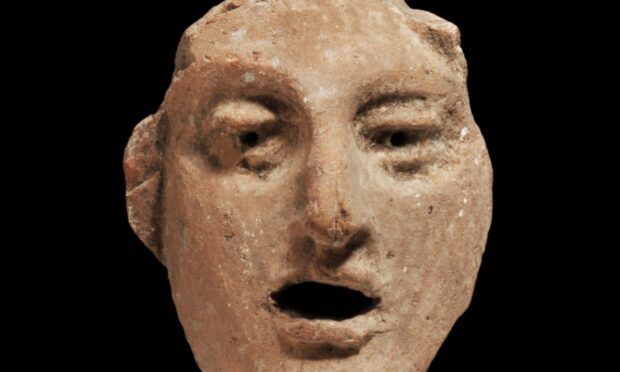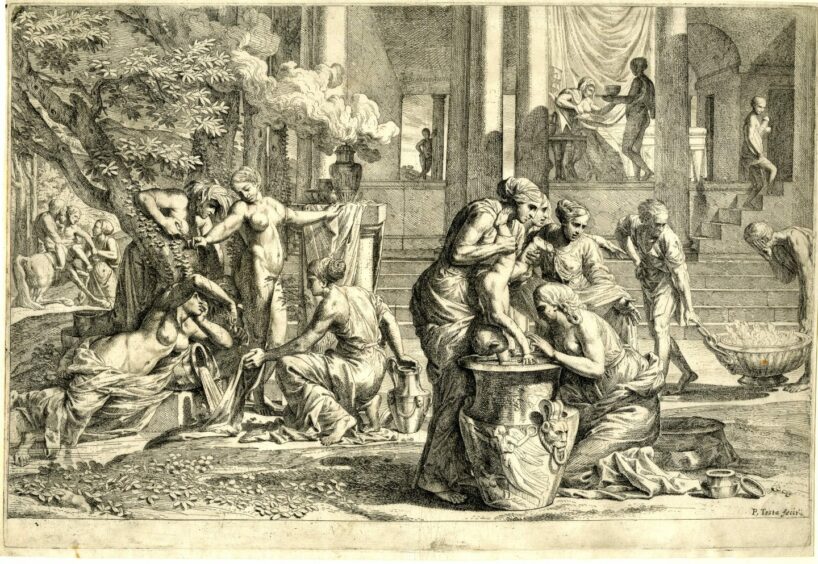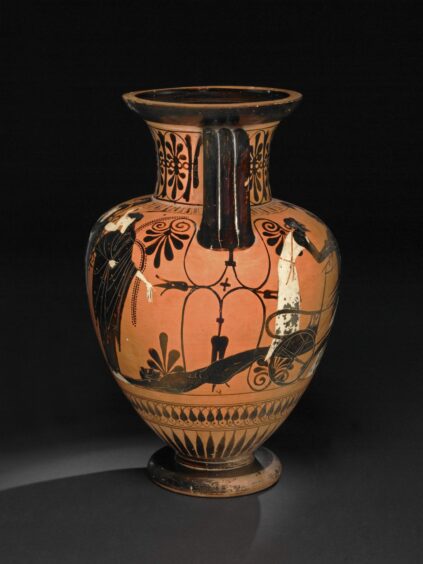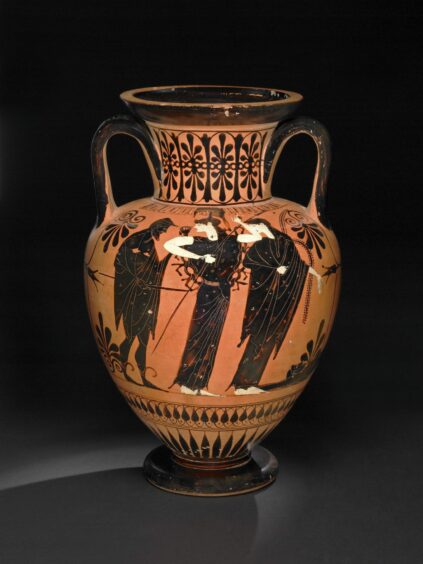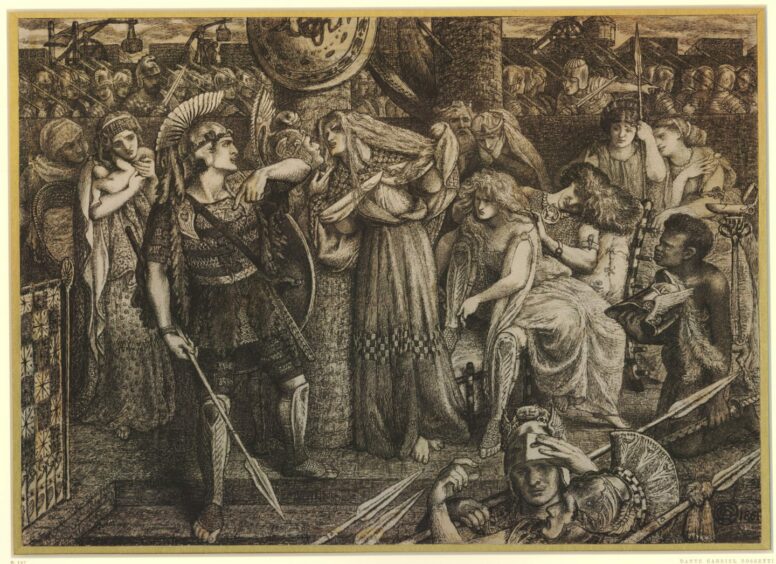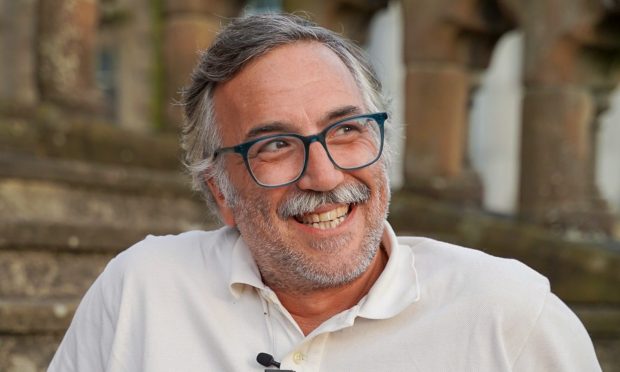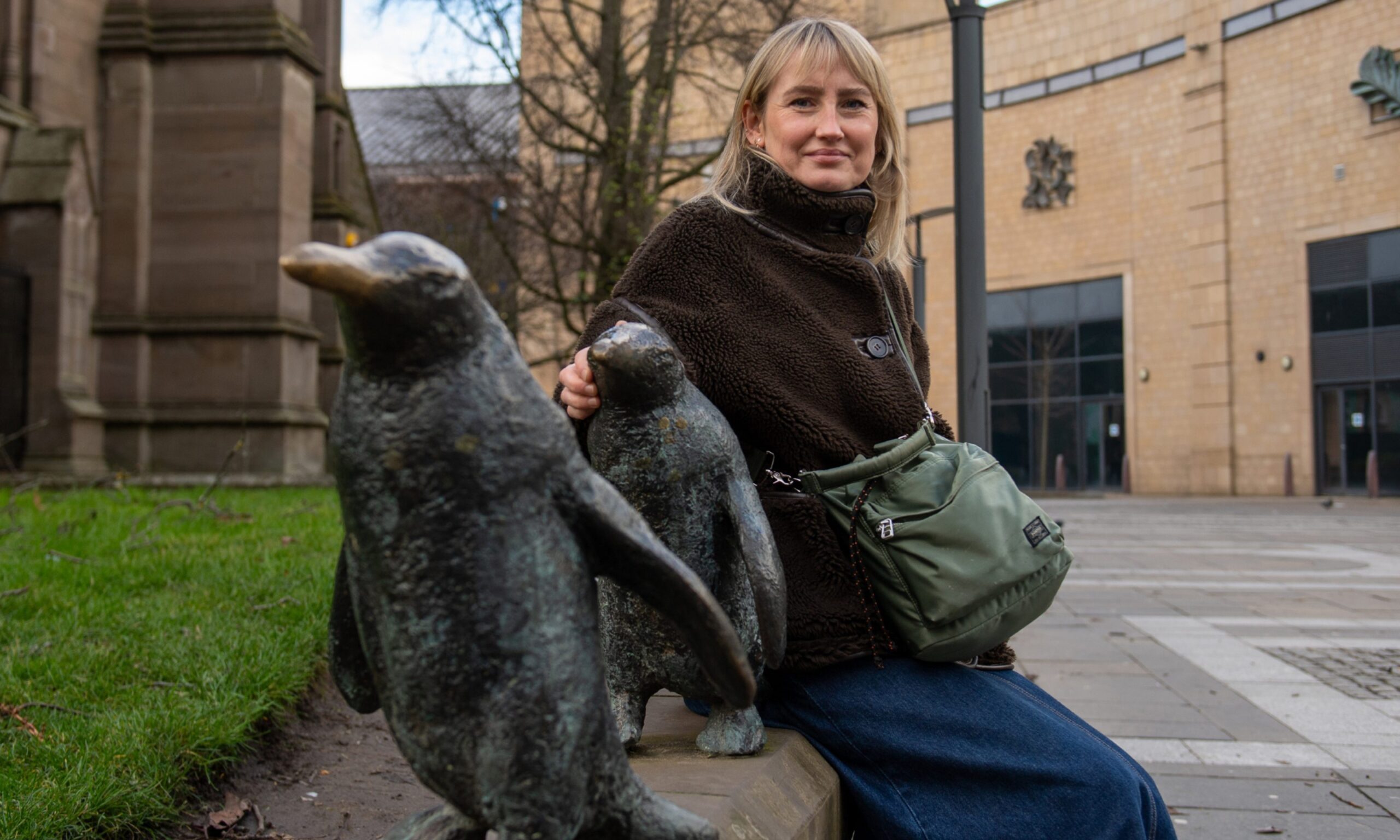From next Thursday, Dundee’s The McManus is set to display four important treasures loaned from the British Museum, London.
This is part of an exhibition that examines our continuing fascination with a myth that dates back three millennia – the story of the fall of Troy.
Troy: Beauty and Heroism arrives as part of a British Museum initiative to share items from its world-renowned collection with venues around the country, to which the Tayside art gallery and museum has added relevant pieces from its own and nearby resources.
A chance to see rare pieces
For The McManus’s early history curator Christina Donald, this is a great opportunity to share knowledge for her own place of work and the English institution, which in 2020 to 2021 claimed three times as many people viewed its objects outside London than in the British Museum itself.
“It gives a chance for visitors to see objects from a national institution without having to travel to London,” she says, “and for us to work with curators who are specialists in their field and have access to the most up to date research.
“It also gives us an opportunity to research and display objects that are currently in storage, while the British Museum gets to collaborate with different institutions and showcase particular objects that for various reasons may not fit into their permanent displays.”
Helen and Achilles
Two years after its own blockbuster show, Troy: Myth and Reality, the lending institution has provided pieces connected to two key figures from the myth first recorded in Homer’s Iliad: Helen, the celebrated beauty whose marriage to the Trojan prince Paris started the 10-year war, and Achilles, one of the most fearsome warriors in the Greek army.
For the British Museum, both cut fascinating and controversial figures – Helen for causing her husband King Menelaus to assemble an army of Greek heroes to get her back, including one with a reputation just as divisive.
In a statement, the museum asks: “When she is taken to Troy by a Trojan prince… Is she an innocent victim or a guilty seductress? Achilles is admired as the ultimate hero who chooses an early death as the price of everlasting fame. Others see him as a brutal killing machine or a man driven beyond humanity by grief.
“The actions of Helen and Achilles raise questions about fate and responsibility, the power of beauty, the meaning of love and the nature of heroism.”
Helen’s abduction and Hector’s death
From the British Museum comes an Etruscan urn, on loan for the first time, that portrays Helen’s abduction, while an Athenian amphora shows a vengeful Achilles dragging the corpse of his enemy Hector around the battlefield.
These ancient objects are supplemented by two more recent artworks: the Pre-Raphaelite Dante Gabriel Rossetti’s study for Cassandra, an uncompleted work that included a portrayal of Helen, and a Baroque etching The birth and infancy of Achilles by the 17th Century Italian master Pietro Testa.
To these Christina has added ceramics from The McManus and borrowed plaster casts of sculptures from Duncan of Jordanstone College of Art and Design and the University of Dundee, originally used to teach art, she explains.
“Ancient Greek bodies were considered the peak of physical perfection, an ideal that is still held today,” Christina says. “What we are trying to say is that as the story of Troy has travelled through different places and times, so too have these objects and their stories.”
Timeless universal themes
For the curator, these legends continue to resonate not only because they were so important to classical civilisations, but also because they contain such timeless, universal themes.
“The ancient Greeks travelled to many other parts of the world and brought their stories with them,” she says. “The Greeks mapped their world with these myths. The story of Troy was important to the Romans, too. They believed they descended from the Trojan hero Aeneas who escaped to Italy.
“The Greek gods are also major players in the myths – they are not distant enigmas, they are very human and imperfect. They interfere in the war on both sides, have their favourites and act on emotions.”
Troy: Beauty and Heroism runs at The McManus from 19 May to 14 August
